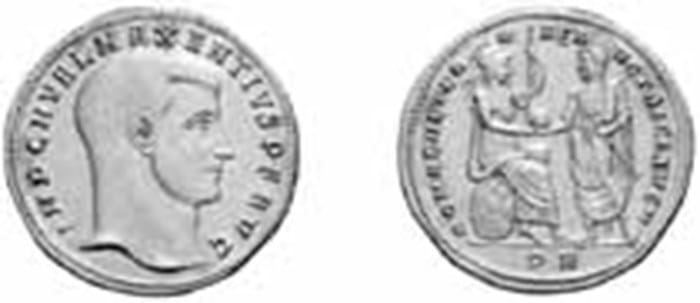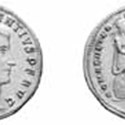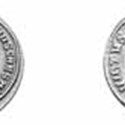One of the lots most worthy of notice is the evocative massive (40mm diameter) med-allion struck in Rome by the ill-fated Emperor Maxentius in AD308. He was to lose out to the soon-to-be-Christian Emperor Constantine at the battle of the Milvian bridge in AD312. It was this decisive battle which was to turn the Roman empire officially Christian.
The uncomplicated scene represents the emperor's attachment to pagan ideals: the emperor is being charged by Roma herself on current degradations; the inscription reads (in translation) Eternal Rome, Guardian of our Emperor.
There are only two examples of this medallion known. This one was estimated at SFr400,000 but it made SFr625,000 (£271,740). The other example, which is in considerably less attractive condition (it is very stained), was sold at Sotheby's in New York in 1990 for $140,000 (estimate $100,000-125,000) which was then £72,900.
Now let us look for something more generally affordable, interesting and attractive. The porphyry emperors now on the outside of the Duomo in Venice are well known. They were looted by the Venetians from Constantinople in 1204. We know it was them because they left behind an emperor's leg which was found on the site of their camp and is now in the Istanbul archaeological museum.
The four emperors appear on a relatively common silver argenteus (denomination) of the time. There was one in this sale struck by Const-antius I, the father of Constantine the Great, at Siscia (in what is now Croatia) in AD294-5. Almost always, as here, they come in near enough mint state. Estimated at SFr1300. It made SFr1400 (£608).
…and the loser is: Emperor Maxentius
THE Numismatica Ars Classica (15% buyer’s premium plus local sales tax) sale in Zurich on May 12 was no less wonderful than most of its predecessors. We have become used to prices which draw gasps from this house.








